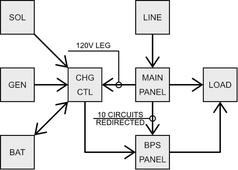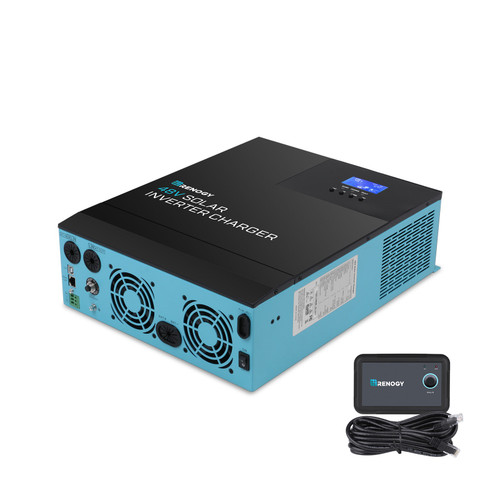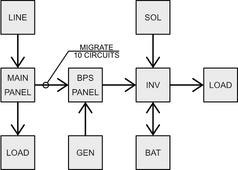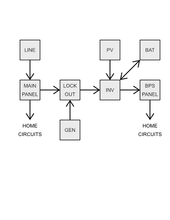Been going back and fourth on how I want my system to work. Here's the layout I'm thinking on, but I need a sanity check, to make sure there are no obvious issued, then I can start creating more detailed plans.
Thinking of pulling a 120V line, with a 30a breaker, from the Main Panel to my Renogy 48 volt, 3500W Inverter Charger.
Then redirect 10 circuits from the Main Panel, to the Bypass Panel.
It occurred to me I don't really need a bypass panel, I think I could have just used a regular, auxiliary panel in this configuration, but it's what I have.
This is the simplest way I could figure out how to integrate everything into my home. Anyway, are there any obvious problems, and what should I be on the lookout for, moving forward, assuming this would work?
Thankyou kindly.
Thinking of pulling a 120V line, with a 30a breaker, from the Main Panel to my Renogy 48 volt, 3500W Inverter Charger.
Then redirect 10 circuits from the Main Panel, to the Bypass Panel.
It occurred to me I don't really need a bypass panel, I think I could have just used a regular, auxiliary panel in this configuration, but it's what I have.
This is the simplest way I could figure out how to integrate everything into my home. Anyway, are there any obvious problems, and what should I be on the lookout for, moving forward, assuming this would work?
Thankyou kindly.








